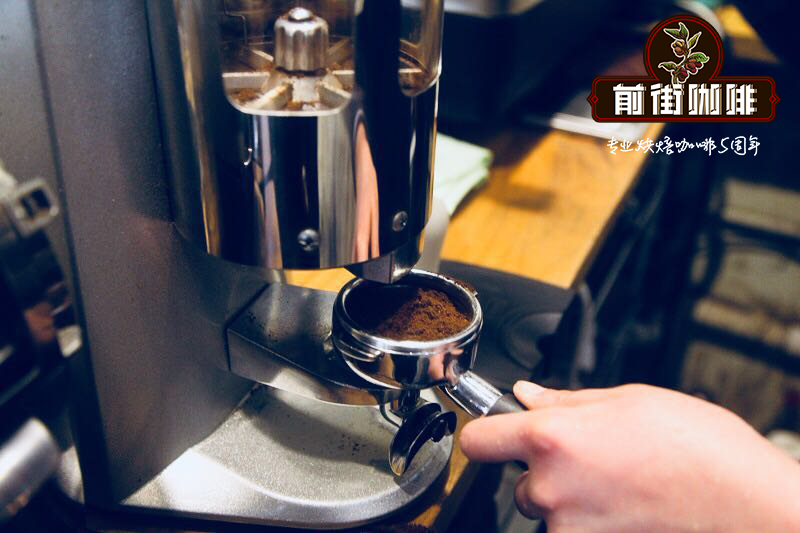The secret of a perfect Espresso? Better, cheaper, greener Espresso?

Nowadays, most of the drinks in boutique coffee shops are based on Espresso coffee, whether it is Americano, Latte or a cup of Espresso Martini, they are all based on Espresso. However, brewing a cup of Espresso is also the most complicated, which involves too many combinations and influencing factors, such as the choice of coffee beans, grinding, powder weight, water temperature, water pressure and the amount of coffee, all of which will affect the taste of the coffee brewed in just over a minute.
When every barista spends all his life trying to make a perfect Espresso, some scientists claim that their perfect proportion of cooking Espresso with data and science will certainly attract people's attention! Let's take a look at who has such a big tone and what the story is.
The title of the whole report is [Systematically Improving Espresso: Insights from Mathematical Modeling and Experiment] (systematically improving Espresso: exploring data models and experiments), written by Christopher H. Hendon, one of the collaborators of [Water for Coffee], another coffee masterpiece, and if you have read this book before, you will know that this report must be another headache for liberal arts students, full of a series of numbers and hypotheses. So for the more technical content, you should read the report yourself, but the following will summarize a few noteworthy and interesting details.
Most people's Espresso cooking education is more or less the same, probably in the range of coffee powder that is younger than young salt, 18g-22g or so, and the coffee machine is set at 9 atmospheric pressure at about 20 Espresso for 35 seconds "about 35g Espresso". And how do we know that the flavor that should be taken from the coffee has been properly picked up? In addition to tasting coffee according to people's subjective feelings, in fact, we mostly calculate the TDS (Total Dissolved Solids) of coffee measured by machines, and the goal is to push the extraction rate to 17%-23%, which is the ideal rate for most good coffee obtained by the Fine Coffee Association after research.
However, can this ideal rate really only be achieved by using the above method which is regarded as a "precedent"? Or are we so used to it that some details are ignored?
One part of the report challenges baristas to use fine grinding settings to make Espresso, because in order to pursue a higher extraction rate, when the coffee is ground finer, it will bring a larger surface area, thus prolonging the contact time between the powder layer and the water flow, and can naturally "extract" more flavor substances. However, as you can see from the table above, when the amount of coffee consumption reaches its peak due to the decrease of grinding age, when other variables remain constant, a lower grinding degree will only reduce the extraction rate. This is because under high temperature and high pressure water flow, the density in the powder layer is bound to be different, resulting in blockage and channel effect (Channelling, which mainly means that the water flow only flows to places with less resistance, so that some parts of the powder layer are not properly harvested, resulting in instability and complete removal). Therefore, they think that compared with the younger grinding, the thicker and more uniform coffee grinding can reduce the chance of channel heterogeneity and stabilize the extraction rate.
The other part questions whether the nine atmospheric pressure water set by the coffee machine can get the best effect, or is it more likely to cause the edge channel effect because the pressure is too strong? Therefore, the experiment in the report also specifically tried to use 6 atmospheric pressure to drain the water.
Better, cheaper and greener Espresso?
As mentioned above, in the report, they reduced the grinding degree of the powder while reducing the amount of powder, and reduced the pressure of the coffee machine to 6 atmospheric pressure, hoping to improve the flavor stability of Espresso and reduce the consumption of coffee powder by reducing the channel effect.
In order to bring the experiment closer to the real coffee shop operation, they also put the theory into practice in an Oregon boutique coffee shop. When compared with the store's sales over the same period, they reduced coffee consumption by nearly a quarter, saving an average of $0.13 per cup. Because of the change in the setting, they also made the brewing time faster to 14 seconds per cup of Espresso, effectively increasing the time from placing the order to completing the order. At a time when the coffee industry is facing unstable production caused by different environmental problems, saving coffee consumption is also one of our available methods.
However, like all the good things in the world, the reality is not so beautiful.
Although it is true that the selection of coffee is more stable and has different benefits, powder reduction and rough grinding coupled with low pressure will reduce the concentration of coffee, and there must be a certain gap in taste and flavor. This is why many baristas emphasize that instruments such as the TDS can really improve our grasp of coffee flavor and brewing, and have more data for reference, but if baristas do not have a well-trained sensory system, more information will only be on paper.
Small summary | Always Question
As James Hoffemann said: Did science just reinvent Espresso? Maybe. Depending on the grinder and coffee maker, the results you have the opportunity to get will be different. But in the final analysis, everyone just wants to make a better, more perfect and consistent Espresso, so that everyone who likes coffee can have a satisfactory cup of coffee.
It is important not to be afraid to challenge the "laws". Some laws exist to accommodate the technical limitations or trends at that time, which may not be applicable in modern practice.
Important Notice :
前街咖啡 FrontStreet Coffee has moved to new addredd:
FrontStreet Coffee Address: 315,Donghua East Road,GuangZhou
Tel:020 38364473
- Prev
Understand the importance of coffee roasting maturity how to judge coffee maturity according to taste
Simply put, roasting maturity is one of the things you must know and know about coffee. Maturity determines the flavor, color and texture of each coffee. Judging by the appearance and color of coffee, the maturity is unscientific. Maturity can be as light as fingerprints to convey unique producing characteristics and raw bean treatment methods, which will let you experience the crisp aroma of citrus, delicate flowers or
- Next

How to produce decaf coffee? Solvent extraction supercritical fluid extraction water treatment
Having a cup of coffee in the morning to kick off the day's work has become a daily ritual for many people, and even tasting coffee has become a social activity. However, the problem that bothers many people is that although they like the unique smell of coffee, they do not want coffee to be too "refreshing" to affect their daily life. Decaf coffee (decaf coffee, also known as decaf coffee)
Related
- Beginners will see the "Coffee pull flower" guide!
- What is the difference between ice blog purified milk and ordinary milk coffee?
- Why is the Philippines the largest producer of crops in Liberia?
- For coffee extraction, should the fine powder be retained?
- How does extracted espresso fill pressed powder? How much strength does it take to press the powder?
- How to make jasmine cold extract coffee? Is the jasmine + latte good?
- Will this little toy really make the coffee taste better? How does Lily Drip affect coffee extraction?
- Will the action of slapping the filter cup also affect coffee extraction?
- What's the difference between powder-to-water ratio and powder-to-liquid ratio?
- What is the Ethiopian local species? What does it have to do with Heirloom native species?

